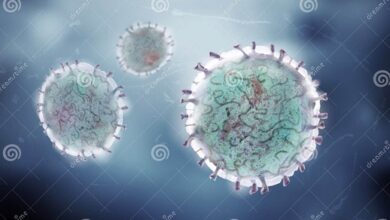Difference between allergy and intolerance Similarities and FAQs
Allergy and Intolerance
In this article we will provide you the Difference between allergy and intolerance Similarities and FAQs.
What does allergy mean
The term allergy was coined in 1906 by Dr. Clemens Von Pirquet to define a special type of immunological or defensive response to substances that do not normally induce reactions in most people. The origin of an allergic reaction is therefore not in the agent that produces it, but in the individual themselves.
For this reason, it is considered that the condition of being allergic has an important constitutional component, that is, it depends on an individual predisposition that is frequently hereditary. To define this predisposition, the term atopy is used (which literally means “out of place”), proposed by Dr. Arthur Fernández-Coca in 1922. Atopy is defined as a state of hypersensitivity in people with diseases such as asthma, rhinitis, , conjunctivitis and some dermatitis, which is why the terms allergy and atopy are used interchangeably to globally designate these diseases.
The concepts of allergy and atopy are closely linked to hypersensitivity , to the point that they are sometimes considered synonyms. In fact, when we talk about hypersensitivity we are referring to the immune response mechanism that leads to the allergic reaction, so both concepts are closely related, although they are not the same.
This mechanism of hypersensitivity is not unique, since within the complexity of our immune system there are various forms of response with different manifestations. In all cases we must know that any allergic response involves an inflammatory process in which different types of cells and an enormous diversity of substances produced by these cells participate.
What does intolerance mean?
Intolerance is the inability to accept opinions, lifestyles or beliefs different from one’s own . It is an attitude that is based on prejudice and can manifest itself both towards individuals and entire groups. Intolerance not only implies rejection of others but also limitations for personal and social development, since it prevents understanding other points of view and inhibits empathy. This entails discrimination, exclusions and violence between those who are part of the same social Communication” in the 1960s. The historical context. Tolerance is therefore essential for mutual respect and a harmonious environment in which everyone has equal rights regardless of their ethnic origin, gender or sexual orientation.
Similarities between allergy and intolerance
Allergies and intolerances _are two common conditions related to the immune system’s response to foods or substances. An allergy is an exaggerated reaction of the immune system to a certain antigen, while intolerance does not involve the immune system. The first is more serious than the second, since they can cause serious diseases such as asthma and tissue inflammation. The symptoms of both conditions are usually similar: abdominal pain, diarrhea, skin rashes and breathing problems; However, allergies also include others such as nasal congestion and itchy eyes. Therefore, while there are many similarities between these two concepts, there are certain important differences to consider when it comes to identifying the correct type of bodily reaction.
Differences between allergy and intolerance
An allergy is an exaggerated immune response of the body to certain allergens, such as pollen or animals. This reaction can cause mild symptoms, such as itching and rashes, but can also cause serious illness and even death. An extremely severe case of allergy is known as anaphylaxis. On the other hand, food intolerance does not imply an immune response by the body. Instead, it is linked to the inability to digest certain nutrients; The symptoms are generally smaller than in allergic reactions and are usually different (for example diarrhea), with the main treatment being to avoid consuming the intolerated food.
Frequent questions about allergy and intolerance
What are the symptoms of allergies?
Allergy symptoms can vary depending on the type of allergen that is causing the reaction. Most allergies cause common symptoms, such as sneezing, nasal congestion, itchy eyes and nose, asthma, and dermatitis. Other less common symptoms may also occur, such as difficulty breathing or swallowing, persistent dry cough, and even anaphylaxis (a serious reaction).
What are the types of allergies?
The most common types of allergies include allergies to dust mites, animal dander, pollen, dairy products, soy and other common foods, insect venom, and medications. Some people also have allergies to metals or chemicals. Severe reactions to bee or wasp stings are considered a particularly dangerous form of immediate hypersensitivity.
What can cause an allergy?
An allergy can be caused by a variety of things, including pollen, foods, pets, certain medicines, and chemicals in the environment. Some people are also allergic to dust mites.
What is good for allergies?
Antihistamine medications are good for allergies. You can also help reduce symptoms by avoiding exposure to the allergy-causing agent, such as pollen, dust mites, and chemicals. Another way to treat symptoms is with natural therapies such as steam inhalations with essential oils or decongestant herbs, taking dietary supplements, drinking medicinal teas, or clearing the nasal passages with a nasal irrigator.
What does intolerance mean?
Intolerance is an attitude or behavior that shows rejection or hostility toward something, usually due to personal prejudices. It refers to the lack of respect for different opinions, beliefs, ethnicities and cultures; to the denial of the right of other people to live their own lives according to their moral and ideological principles without being judged or criticized.
What is it to be an intolerant person?
Being an intolerant person means having no tolerance for the opinions, beliefs or practices of others. This can manifest itself in ways such as moral judgment, criticism, and rejection of those who are different from us. Tolerant people, on the other hand, accept and respect the opinions and lifestyles of others without judging or discriminating against them.
What is intolerance 5 examples?
Intolerance is the inability or refusal to tolerate something, such as certain opinions, attitudes or behaviors. Here are 5 examples of intolerance:1. Racial intolerance: Rejection of people of a different race based on prejudices and stereotypes. 2. Religious intolerance: Refusing to accept the religious beliefs of other individuals or organizations. 3. Sexual intolerance: Disapproval of sexual behavior that is not considered “normal.” 4. Political intolerance: Refusal to respect political ideas and tendencies contrary to one’s own. 5. Cultural intolerance: Not wanting to understand or respect customs that are distinctive of a specific cultural group.
What are the types of intolerance?
The main types of intolerance are: -Food intolerance: non-immune adverse reactions that occur after ingestion of a specific food, usually due to a deficiency in the body’s quality of life. These patients are limited in their ability to digest and absorb the nutrient. -Drug intolerance: immediate and anaphylactic hypersensitivity to drugs, with symptoms such as rash, hives, angioedema (inflammation), diarrhea and swelling. –Gluten intolerance: this condition occurs when the body reacts negatively to the consumption of gluten. This sensitivity can cause gastrointestinal symptoms such as abdominal pain, nausea and vomiting. -Multiple chemical intolerances (MCS): MCS is a disorder in which people have severe symptoms after being exposed to common chemicals in their environment; This disorder may include chronic respiratory and digestive problems associated with the inhalation or ingestion of chemicals.




